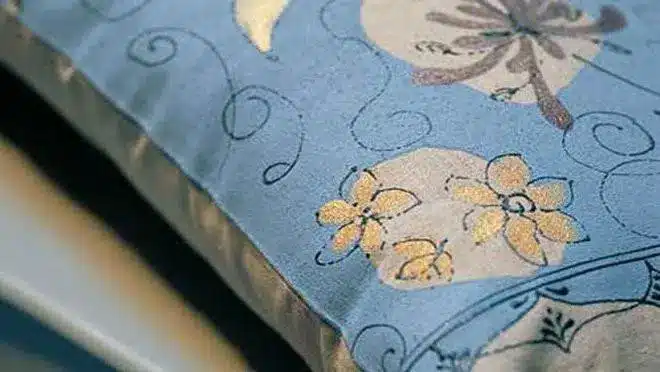We’ll appreciate customizing and painting our old bags and t-shirts!
In summary:
-
How is textile painting used?
-
My textiles need to be customized, what paint should I use?
-
What should I do first?
Painting textiles is a technique among others for textile customization. You’ll need a little patience and, of course… a love for art.
Textile painting: what is it used for?
The technique is clearly appealing to anyone who likes to personalize textile items, give new life to clothes, bags, cushions, and other fabrics that have fallen into disuse, or who just likes to paint. You will see that if you are diligent, you will be able to achieve great results.
My textiles need to be customized, what paint should I use?
If you are already a painter and own acrylic paint, then you can simply buy a specific medium to thin your paint and ensure its adhesion and flexibility if you wish to use it. As an alternative, there are several kinds of textile paint that can be used to paint almost any [actu:739845 fabric] without priming (be sure to wash your fabrics before beginning your project). You will be able to get an irreproachable quality of rendering with the fabric paint of the Pébéo brand, under the name Setacolor. With an iron, you can fix the patterns for bright colors that will last without tarnishing or cracking after washing and lighting. In order to paint on light [actu:739845 fabric], you should choose “transparent” colors, and in order to paint on dark fabrics, use “opaque” colors. Additionally, you can create pretty decorations in volume with shades with metallic or glossy effects, or even with textured textile paint.
Where do I begin?
It is easiest to use stencils. Make sure that they adhere perfectly to the [actu:739845 fabric] or use temporary glue spray to fix them properly if you make your own stencils. Then you can use your colors and [actu:739807 brushes] to create actual illustrations on your textiles! To transfer your drawing onto the textile, avoid using tracing paper, rather use carbon paper, a luminous board or, failing that, a window and some sunlight to be able to copy it by transparency! Whenever you are painting textiles, place a sheet between the table and the textile, since the paint passes through!
